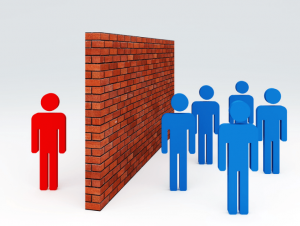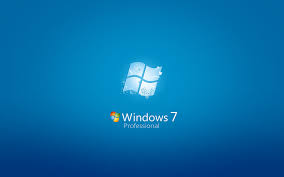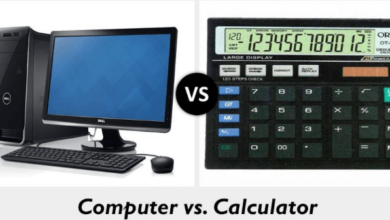Barriers to Effective Communication | Types & Examples
Explain common types of communication barriers
Barriers to Effective Communication: We live in a world that is fundamentally dependent on communication, whether it is communication with advanced technology or communication between individuals within the community and within working environments.
Every individual needs to communicate with his co-worker, his manager, and his boss in any work environment. In the same family, the father needs to communicate with his or her children, communicate with their children, and communicate with their parents and friends.
so,
Communication is the way people exchange and communicate information, and use it to express their life needs and emotions to control others and influence them, using several methods such as speech, sign language, and writing.
bottom line is,
The communication process is of great importance to people, organizations, and institutions in order to interact with each other to achieve goals, objectives,
Despite the importance of the communication process, it suffers from a set of obstacles, and we will identify through the following lines of this article the main obstacles to the process of communication, and disposal methods only prefer the dear readers to follow up.
Types of communication
There are many types of communication including:
Verbal communication: Be face-to-face or by telephone, radio, television, or other media.
Nonverbal communication: body language and gestures.
Written communication: letters, emails, books, magazines, or the Internet
Visualizations: graphs, charts, maps, logos, and other ways to communicate information.
The Elements of Communication
- Communication elements include:
- The Sender: The person who sends the message expressing an emotion or emotion inside it, or asking for something he wants.
- The receiver: He is the recipient of this message, and he is about to respond to it either by rejection or acceptance.
- Letter: The object or object that was requested and expressed and sent in the message.
- Means of communication: the method used by the sender to deliver and transmit his message to the future.
barriers to Effective Communication
Despite the importance of communication, however, it faces many obstacles and these obstacles mean a group of influences that cause the disruption of the process of transferring information, and the exchange from here, we find that the obstacles to the process of communication mean the presence of a barrier to delay the arrival of the message effectively.
communication barrier is an obstruction to effective communication. those things by which effective communication is obstructed are called barriers to effective communication.
they are the effects that affect and disrupt the communication elements in order not to do their part in conveying and transmitting the message, conveying it in a distorted manner, or delaying its arrival, which prevents it from achieving the objective for which it was found.
When you send a message to another company or person, you often have noticed that it does not correctly reach the next entity or person. I.e. You do not explain your purpose or goal clearly, which is referred to as a Barrier to Effective Communication.
Here, I have provided a list of Communication Barriers fully explained with examples, which will be hopefully the key factors for the success of an individual or organization by overcoming them.
why….?
Because there are a few obstacles in the communication process:
Types of Communication Barriers
- External or mechanical barriers
- Linguistic and Cultural Barriers
- Psychological Social Barriers
- Semantic Barriers
- Environmental barriers
- Moral Constraints
- Organizational Constraints
what are External or Mechanical Barriers:
There are certain defects in the devices we use in the communication process, they are taken as external/mechanical barriers, not within the control of either the receiver or sender of the message.
- (a) in case of mass communication, failure of the loudspeaker, distance, etc. which are mechanical in nature.
- (b) disturbance on the radio, ink spread on the newspaper, and rolling of the picture on TV can be taken as a barrier.
- (c) environment sounds like traffic noise, conversation, door and window banging, etc.
What are Psychological and Social Barriers:
They are obstacles to the individual’s ideas and traditions. They affect the way the sender and the receiver understand the message. The future may understand a message from the sender in the wrong sense that what he understood is what the sender means, leading to a misunderstanding between the parties. Unexpected action.
what are Environmental Barriers:
This type of impediment relates to the communication environment and leads to an imbalance in the process of effective communication, and leads to the failure to achieve the desired goal, such as lack of technical elements in the institution, as well as the size of the large institution or the presence of branches,
this also delays the process of communication And the lack of harmony and harmony among its members.
There are also institutions that rely on one-way communication and there is no direct contact between their members. This impedes the transmission of the message and impedes its interpretation and understanding by both parties.
What are Moral Barriers:
These impediments relate to the time of writing the letter, the purpose, or the method of communication that was made during the expression. For example, the purpose of writing the message may not be clear or the concept of the message is different for the receiver.
At a specific time that can not be changed, the way people sit and their style of communication during the transmission of the message and negative facial expressions are a barrier to communication.
What are Organizational Barriers:
The organizational structure of the institution. Some institutions rely on a weak organizational structure or have no specific organizational structure within the organization.
The multiple administrative levels within the organization also make it difficult to determine the powers and the difficulty of determining the goal, which leads to difficulty in communication.
Factors Affecting Better Communication
here we have put a list of possible factors affecting effective communication in detail.
- Emotional liking or Disliking
- status
- perception
- personality
- culture
- power
- Geographic Distance
- The absence of mutual interest
- speech and pitch of communication
- media or medium
- audience identification
- interruptions
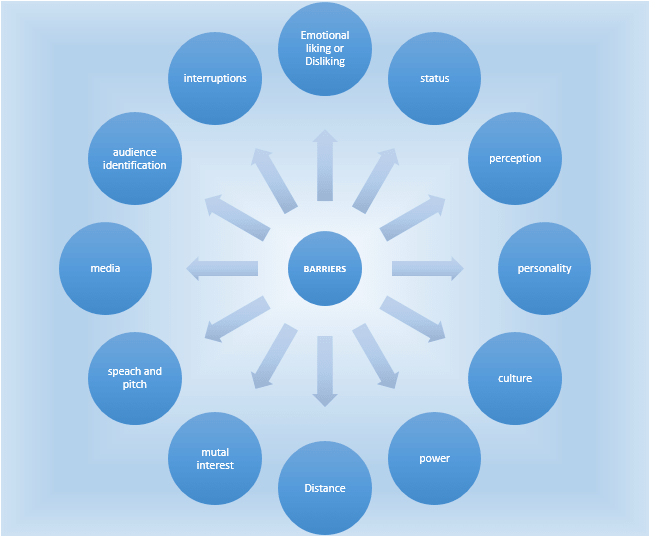
Emotional liking or Disliking
A common obstacle which often used as a barrier to forwarding a message and processing it is the emotional liking or disliking of the receiver. For example, if you send a message to your subordinate that in case of a necessary work today, you will give more time after duty hours.
Then: If he is tired of working all day long, he will say what’s the problem. How do I do this? And If he is mentally calm and restful, he will accept it with pleasure.
Status of the person
Employees’ status in any institution may also affect the communication process and delivery of the message. More often Small employees are paid less attention and the talk of high officials is heard completely.
And that Gap of communication later produces misconceptions between the high-level employees and the smallest which later on causes barriers to the development of the institution.
perception
People’s awareness, feeling of responsibility, and understanding are also restricted in the right way of information and communication process. Because each person’s individual thinking or thoughts and actions differ from another person’s.
Each person receives the message or information and works on it according to his own consciousness and understanding. That’s why every person’s reaction is different.
For Example:
If there is a group of six people And one says let`s follow point from point A to point B. So, everyone`s reaction will be different from each other.
The difference between thinking and consciousness is due to the following elements:
- Information
- Past Experience
- Reaction
Information: Each person will follow your message with his own information. The extent to which it has knowledge or information, according to that, He will do his part of work.
Past Experience: The person who has some previous experience, will follow your orders keeping it in mind, and will respond positively and better to the work or message.
Reaction: An individual person will show interest in your message and focus on understanding it, then its response will also be positive. This barrier can be displayed below the following diagram.
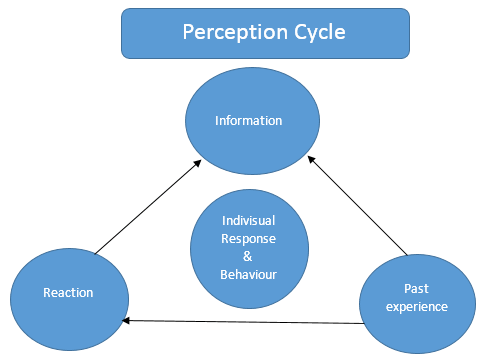
Personality
Personality alas describes a person’s mental and physical information. And it also affects the relationship between the person, which is also considered a barrier between words, information, or phrase exchange in communication.
Usually, height, good wear, and smart people have a higher position in their group, On the other hand, less tallest people have low importance and value than others.
But:
many times taller and good-wearing people forget to keep in view other`s understandings in communication. And thus, Messages cannot be delivered in the context of their edge.
Culture
Unity in culture or civilization plays an important role in the delivery of messages through communication. If the culture or language is the same, information delivery is easy. But if the language and culture of different people are different, it is a big barrier in the communication process.
Therefore, there is a lot of conflict and problems among people where there is a lack of uniformity in civilization. That is why people will feel relaxed in such things where uniformity is found. And relationships with each other will also be better.
Power
Powers are also a reason for barriers and obstacles in the communication process.
how? let me explain:
remember, How can a subordinate indicate the mistakes of his office who has the authority of promotion? Therefore, for better communication, every person should get or accept the policies and tips openly. Done it, as soon as possible.
Geographic Distance
When the sender and receiver live in two different places or areas, we will consider this communication as informal between them. And geographical distances reduce the volume of message delivery in the communication system.
For example, if you are sending a message from Arabian to Saudi Arabia, you will try to send a short message in the shortest time. So that your telephone bill is minimum.
Thus, the importance of the message decreases, and the importance of time increases. And sometimes, the message is not delivered correctly and you can not get the expected objectives.
The absence of mutual interest
If there is no aspect of mutual interest between the two people, they will not be fully interested in each other’s talk. And only a few points will be remembered and forget the rest. There is no effect on message delivery and interaction in this way.
watch this video…!
